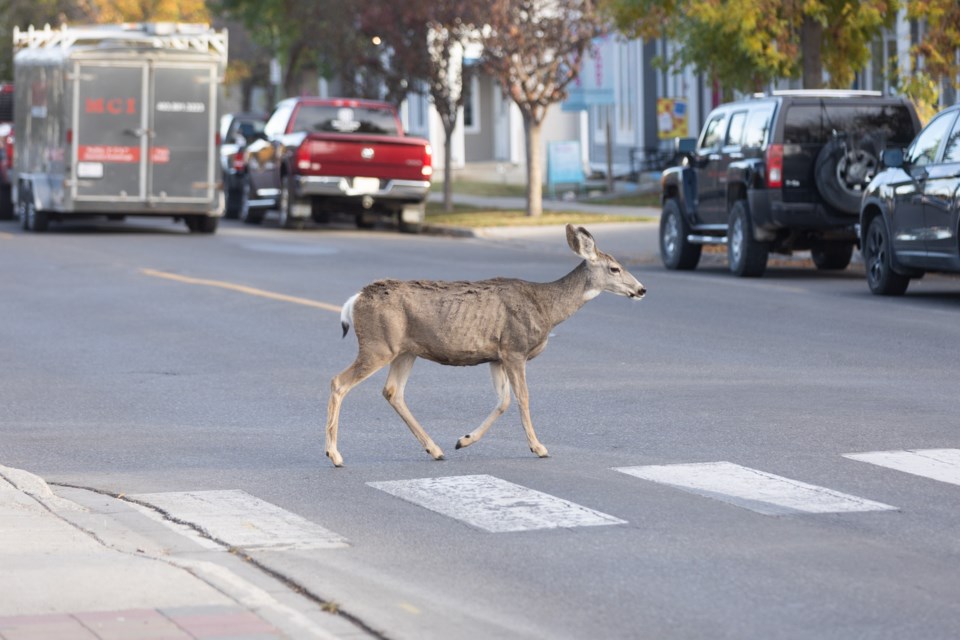Oh deer.
It's no secret a number of these mammals call Okotoks home, with daily sightings along pathways, in parks and private backyards.
The most recent data from February indicates there are more than 120 mule deer frolicking, fornicating and feeding on Town property.
In recent months, the Town enlisted Eagle Creek Wildlife Control to conduct an assessment on the deer situation and explore the possibility of implementing an aversion conditioning program.
"In a lot of ways, it's like having a bully on the block," said company founder Ron Hanson to council last week. "The deer have come to see this place as theirs because no one has stood up to them and said, 'Wait a minute, this is ours.'
"And it’s not that we can’t live together, they just have to know their place a little bit and we just have to put them in their place just by giving them that signal that human beings aren’t to be pushed around, by stressing them, by showing them that they won’t be trodden upon."
Aversion conditioning was one of the mid to long-term strategies identified in the 2022-25 Urban Deer Management Strategy and Action Plan which came out of the work completed during the Urban Deer Task Force's 18-month term.
Key issues identified by the task force were deer habituation, pet injuries, deer/vehicle conflict, deliberate deer feeding, deer accessing private property, foraging on public and private property, bedding down within Town boundaries, as well as breeding, giving birth and living within Town boundaries.
Acting director of operations Christa Michailuk said that all of the task force's short-term strategies to address these concerns have been set in motion, one of which was the deer fencing pilot project, which she said has seen success.
Aversion conditioning is the first longer-term strategy to be considered by council.
In this approach, a dog and handler would come upon a browsing deer and move close enough to get its attention. As the deer stutters or moves away, the person and dog would follow. Hanson said the goal is to push deer into a defensive posture when encountering a pedestrian and a pet, as opposed to the offensive posture currently displayed. This process would be consistent over a period of years, with the introduction of different people and dogs throughout to ensure the deer don't get too comfortable.
Ultimately, the goal is not to clear Okotoks of deer, but to limit negative human-dog-deer interactions.
"Eventually the deer, their first response when they see a handler or a person just walking their dog is to take a defensive posture where they’re going to move off rather than hold their ground," explained Hanson. "So ultimately, you’ll create that environment where people don’t feel as threatened by deer as they do in some cases nowadays."
When conducting a biological assessment as part of the wildlife management work, biologist Ron Giorgi said it is clear the animals are very comfortable outside of naturalized areas — walking, eating, sleeping and breeding in areas like downtown and Cimarron.
"Those deer are living on the citizens' dime is what that amounts to," he said.
Coun. Brent Robinson proposed a motion to proceed with a deer aversion conditioning program with an annual budget of $85,000 to be added as an on-ramp pilot project in the upcoming budget process, which was defeated 4-3.
Coun. Rachel Swendseid then proposed administration look into an incentive program for residents backing on to green spaces to build deer fencing, which was defeated 6-1.
The report was ultimately accepted as information, with no formal decision on whether to proceed with the project.



